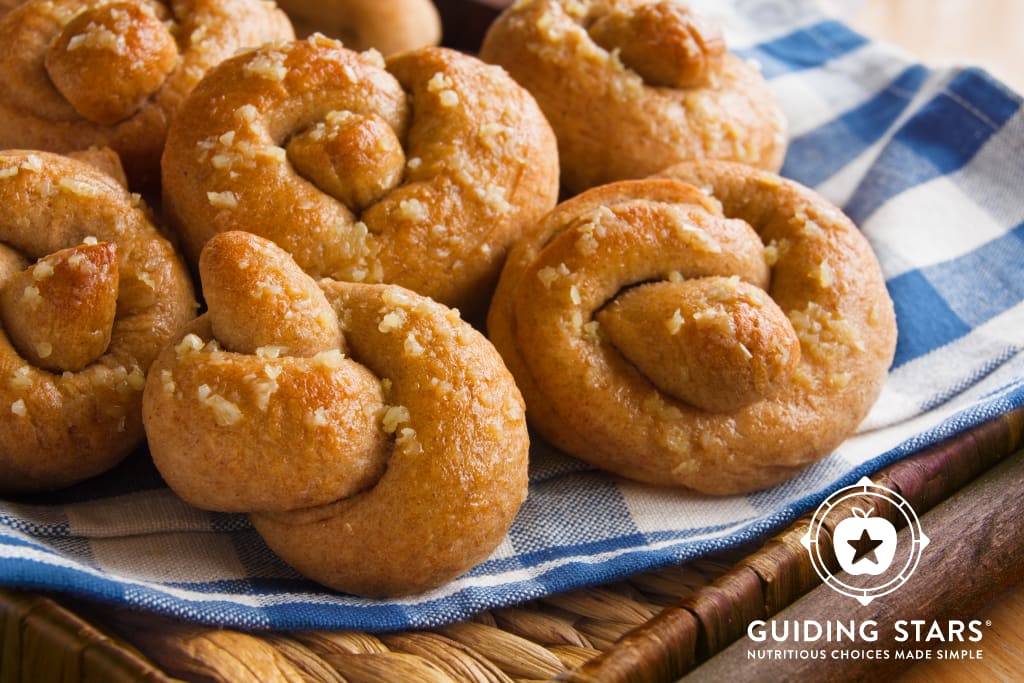In this new blog series that we are calling “Surprising Stars,” we will address categories of foods where consumers find a different number of Guiding Stars earning options than they might expect. For our first topic, we are tackling the bread aisle.
Secret Weapon Bread Dough
Recipes that are higher in whole grains and lower in salt and sugar like this dough earn more stars.
View recipe »Retail dietitians are often asked by customers for help finding a better-for-you bread because product names and packaging can be super confusing. Plus, combing through the many available options and looking closely at Nutrition Facts labels and ingredient statements can take a lot of time.
We like to say that the center of the store, where the bread aisle and other shelf-stable foods are found, is where Guiding Stars really shines. The program’s star ratings, which can be found on store shelves or in an e-commerce environment, inform consumers where in terms of nutrition, the products start getting “good.” Let’s dive into why only about half of the options in the bread aisle earn Guiding Stars.
Added Sodium
Consumers are often surprised by the amount of added sodium that can be found in breads. Unfortunately, for some people this realization might not happen until they have been diagnosed with hypertension and prescribed a low sodium diet. The American Heart Association includes breads and rolls in their “Salty Six” list of popular foods that can add high levels of sodium to your diet. They are included with other salty foods like pizza, sandwiches, cold cuts and cured meats, soup, and burritos and tacos.
Added Sugar
Have you ever tried finding a sliced bread without any added sugar? It might take a while. You’re more likely to find sweeteners like brown sugar, high fructose corn syrup, molasses or plain, old sugar in ingredient statements. Now that manufacturers are required to adopt the new Nutrition Facts label that calls out added sugar, you might be surprised to see the daily value amount listed for breads.
Refined Grains
If you ask a dietitian for their advice in choosing a nutritious bread, they will direct you towards whole-grain options and away from refined grains. Whole grains contain the entire grain, including the endosperm, germ, and bran. However, you need to look for 100% whole grain phrasing on products to be sure it’s entirely whole grain. These options provide more fiber, protein, vitamins, and minerals. Whole grains like whole grain wheat and whole oats should be the first ingredient in the ingredient statement. It’s no wonder that customers get frustrated in this aisle, especially with words like multigrain, whole wheat, and enriched in product names and on packaging.
Start with the Stars
By looking for Guiding Stars earning breads, you can ensure that you are choosing an option that not only has less added sodium and added sugar, but also contains more whole grains, vitamins, and minerals. The more stars a bread earns, the more nutritious a choice it is.
You can look for the star rating of breads online by using our Food Finder.
